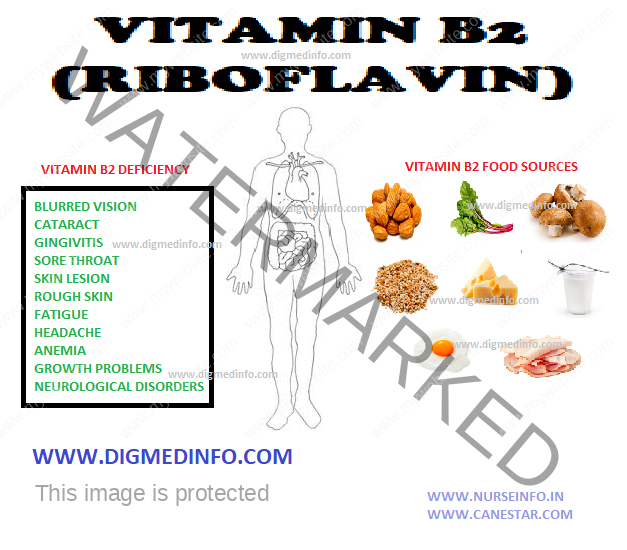RIBOFLAVIN (VITAMIN – B2)
Riboflavin is essentially required in all oxidation reduction reactions involving the coenzymes flavin mononucleotide and flavin adenine dinucleotide which take part in tissue oxidation and respiration. It is moderately heat resistant, but boiling in alkaline media or exposure to sunlight destroys this vitamin.
Good dietary sources include liver, meat, eggs, kidney, milk, other dairy products, green leafy vegetables, and sprouted cereals and pulses. Daily requirement is 0.60 mg/1000 kcal, i.e. a total of 1.5-2 mg.
1. Signs of deficiency Angulostomatitis, cheilosis, nasolabial seborrhea, and possibly vascularization of the cornea are the characteristic features. Angulostomatitis may also occur in deficiencies of niacin and folic acid. Mucosa of the lips appears red and denuded in cheilosis. On taking hot and spicy food there may be soreness. Vascularization of the cornea has been described in some surveys. In glossitis the mucosa over the tongue is red, swollen and painful. This responds to riboflavin therapy. Some cases show lesions in the oral mucosa, eyes, and genitals (oculooro-genital syndrome). The oculo-orogenital syndrome presents as blepharo-conjunctivitis, angular stomatitis, bright red atrophic tongue and dermatitis of the pubic region. This syndrome may occur in pyridoxine deficiency as well.
2. Treatment Riboflavin in a dose of 2-5 mg thrice a day cures the condition in a few days. The drug can be given orally as tablets or syrup or by injections. Treatment of oculo-orogenital syndrome is to give riboflavin up to 100 mg/day and pyridoxine 150 mg/day. The lesions clear within 7-10 days.


